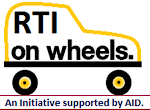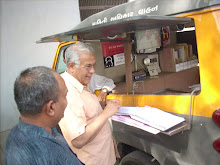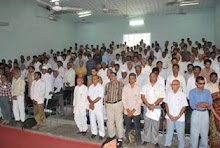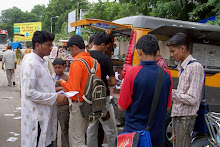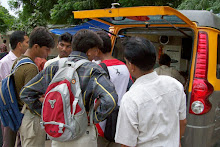The Wire: New Delhi: Thursday, August 24, 2017.
The use of a
civilian as a ‘human shield‘ by the Indian Army in Budgam, Jammu and Kashmir,
during the Srinagar byelections, had stirred the collective conscience of the
nation. It left many wondering if the act by Major General Leetul Gogoi was
allowed under the standard operating procedures (SOPs) laid down for the
security forces. The ministry of home affairs (MHA) has, in a response to a
query filed under the right to information (RTI) Act, refused to divulge the
details of such SOPs, while dropping broad hints that they do exit.
Compensation
for “human shield”
Although
Gogoi was honoured by the army for using Farooq Ahmad Dar as a ‘human shield’,
the fact that the state human rights commission (SHRC) had ordered that Dar be
paid a compensation of Rs 10 lakh was indication enough that he was not a stone
pelter, as alleged, and that the situation ought to have been handled
differently.
Responding to
the RTI filed by activist Venkatesh Nayak of the Commonwealth Human Rights
Initiative, the MHA rejected his plea asking for details of the SOPs in areas
where militant groups are active and use civilians as ‘human shields’.
MHA
evasive
“While the
Central Public Information Officer (CPIO) did not bother to send any reply, the
First Appellate Authority (FAA) of the MHA has rejected my first appeal
invoking security and strategic interests of the state as grounds for for
refusing disclosure,” said Nayak.
Following the
Budgam episode, Nayak said he wanted to know the details of SOPs for various
reasons. One major reason was that the SHRC had chosen to treat the army action
as one which led to “humiliation, physical, psychological torture and wrongful
confinement” of the victim, rather than the “life saving strategy” the Army
portrayed it to be.
Noting that
the law does not permit such treatment for even a convict, he said the media
had also reported the unwillingness of some unnamed officers of the security
forces to follow such coercive measures. “Instead they have expressed the
desire to build better relations with local residents in conflict-affected
areas.”
Centre had
admitted to SOPs earlier
Nayak
insisted that the Centre apparently does have SOPs on the use of ‘human
shields’ but does not want to share them. “It is not as if the government had
no policy on the issue of ‘human shields’ in militancy-affected areas. Almost
four years before the Budgam incident occurred, a member of parliament had
raised a query about the alleged ‘use of civilians as shields’ by left-wing
militant groups in other parts of India,” he said.
In response
to a query by P. Kumar of the All India Anna Dravida Munnetra Kazhagam in May
2013, Nayak said, the then minister of state for home had provided some
statistics as well as made an important revelation about the existence of a
draft SOP on ‘Maoists using villagers as human shields’, which was circulated
among the armed forces and states affected by left-wing extremism (LWE) for
comment. The CPIO of MHA, however, did not bother to even respond to Nayak’s
query.
“Security
and strategic interests” cited
When the
activist, after waiting nearly two months, filed the appeal before the FAA, it
was rejected on the ground that the information and documents sought were
“secret in nature and disclosure of such documents would prejudicially affect
the security and strategic interests of the state.”
Nayak said
that this reply made it clear that the SOPs to guide security forces for
handling situations with ‘human shields’ do exist and that the MHA did not want
to disclose them.
Demanding
that attention be paid to a statement of the MoS in 2013 that “the Central
Armed Police Forces (CAPFs) have sensitised their field formations to take
utmost care to avoid casualties/injuries and any form of harassment of locals
while undertaking anti-naxal operations even when they are used as human
shields by the Maoists… The government of India has issued instructions to all
state governments/CAPFs to adhere to the highest standards of human rights
during anti-LWE operations and to strictly deal with aberrations…”, he said,
this policy clearly applies to states affected by LWE.
In the case
of other states, including Jammu and Kashmir, he said, “it is not clear whether
similar instructions and the related SOPs apply to security personnel” deployed
there as well.
A
different yardstick for J&K?
“If the
government’s policy is to adhere to the strictest standards of human rights
despite any provocation and avoid any form of harassment of locals even when
they are used as “human shields” in other states, how can the use of a civilian
in Jammu and Kashmir as a ‘human shield’ by security forces themselves be
reconciled with this policy?”
Or, he wondered
if the the policy of strict adherence to human rights standards by security
forces is not applicable to Jammu and Kashmir due to its special constitutional
status (under Article 370) or has been changed under the present regime.




